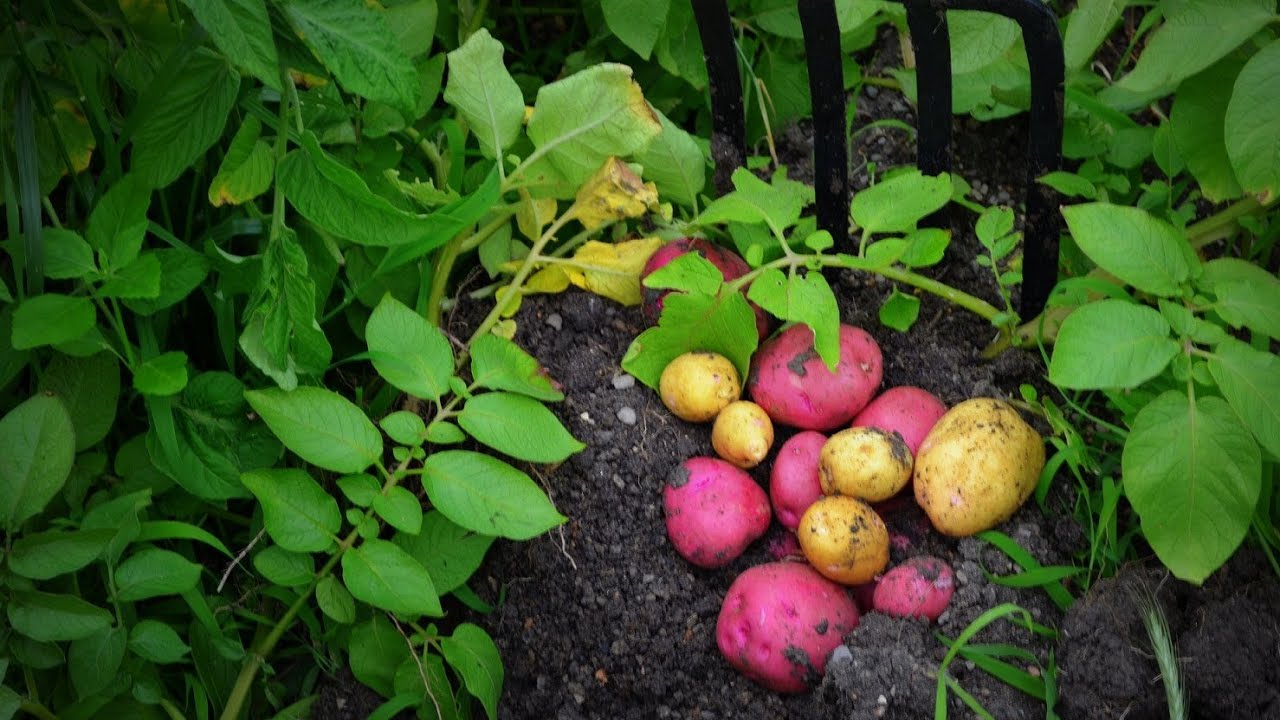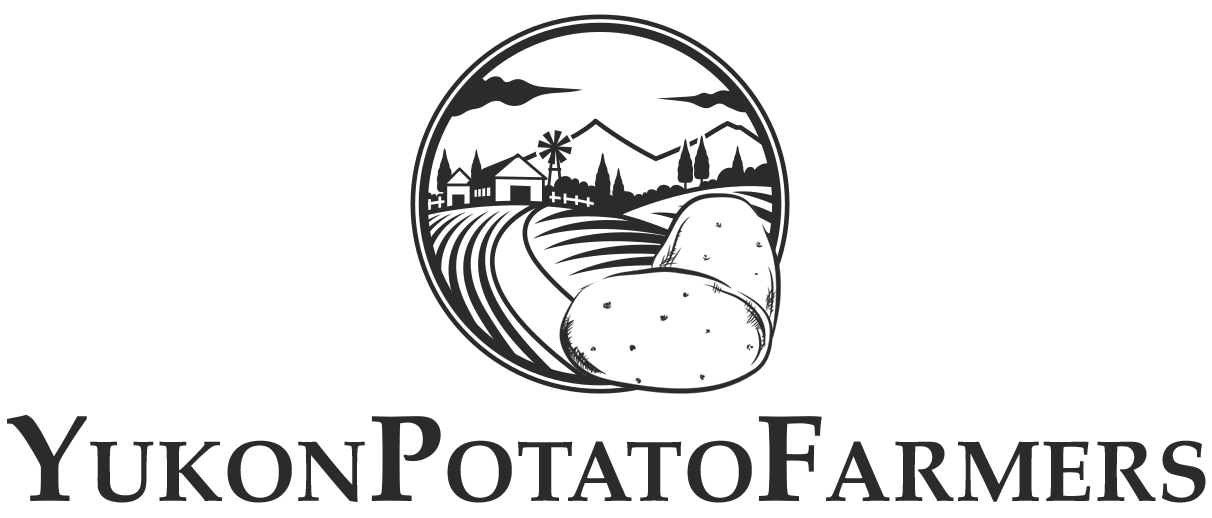
Red, yellow, violet, big, petite – Potatoes come in all shapes, sizes, and color. Yes, it’s a bit overwhelming. But, if you ever want to grow them, best be equipped with the right knowledge on which potato to grow.
From Purple Majesty, Red Gold, American Crescent to Russian Banana, and Yukon Gold, potatoes come in different names, colors, sizes, and shapes. These are some of the potatoes you’d find in a farmer’s market in northwest Canada and across North America. It may be overwhelming to see a purple or violet potato, but because of different geographical regions and climate, they appear in queer shapes and colors.
Types of Potatoes
1. Starchy
These potatoes have high starch content. They consist of many varieties of yams and sweet potatoes, including Idahos/Russets. They also contain low water content, making them absorbent and fluffy when cooked. They make an ideal ingredient for baking.
2. Waxy
Unlike their starchy counterparts, waxy potatoes have high water and sugar content, but low in starch. They have a thin coat, smooth texture, and round-shaped. They are ideal for roasting because they maintain their shape even after cooking.
3. All-Purpose
As their name suggests, all-purpose varieties serve an intermediate role. They have a lower starch content than the typical starchy alternatives and tend to maintain their shape better. They are also moderately absorbent and fluffy, making them perfect for mashing. Yukon Gold potatoes are a perfect example.
Different Varieties of Potatoes
Russet
Russets, also known as Idahos, are perhaps the most common variety of potatoes. They feature a granulated coat and are fleshy. They disintegrate easily when boiled, which makes them preferable to mashing.
Red Potato
These potatoes come in small sizes, round-shaped, and red in color. The flesh appears waxy when cut and provides a creamy feel when boiled. That makes them perfect for making soups and stews. They are known with other names such as Red Poniac, Norland, and Red Bliss.
White Potato
This type of potato has a thin golden coat, oblong shape, and yellow-white flesh. Yukon Gold is a variety of white potatoes, but they have a round shape and relatively smaller. They are used in baking, boiling, and roasting.
Jewel Yam
This is the most commonly known market sweet potato. It’s classified as a starchy potato and a preferred ingredient for baking.
Purple Potato
Used for all cooking purposes, purple potatoes have a thin purple coat. They have a smooth texture, starchy flesh, and a flavorful nutty taste. They offer an excellent addition to baked, boiled, and simmered meals.
Purple Majesty
These feature a purple coat and an oblong shape. It has a mealy, purple flesh. Not only do they retain their color after cooking, but they are also known to have antioxidants. They are used in creating soups and salads, baking, boiling.
Red Gold
These are all-purpose potatoes that feature a smooth tan or red coat and golden flesh. They have an earthy, sweet flavor – like nuts. They are excellent for baking, mashing, roasting, and boiling.
What Varieties are Suitable to Grow in Cold Climates
Potatoes are a go-to ingredient when preparing virtually any dish. Fortunately, it is a crop that can thrive well in poor-quality soil and climates that may otherwise be considered harsh for other crops. Several varieties of potatoes grow well in a cold climate region. They include:
- Idahos/Russets/Burbank
- Yukon Gold
- French Fingerling; and
- Irish potatoes, among others
Notably, they can grow in countries and regions that are known to experience cooler temperatures such as New Brunswick, Prince Edward Island, Yukon Valley, Idaho, and Maine. The mentioned types of potatoes can withstand frosty weather during the early stages and still do well till the harvest season. Nonetheless, if subjected to extended spells of light frosts, they may not make it to maturity.
What is the Yukon Gold Potato Famous For?
The world came to know about Yukon Gold potatoes from a Canadian researcher named Gary Johnson. In 1959, he discovered a yellow-flesh type of potato with a light coat. He called it Yukon because it grew well in the cold climate of northwestern Canadian country known for its historic Goldrush.
This kind of potato has a medium starch and moisture content with a yellow interior that resembled an already-buttered potato. They are especially preferred for several cooking techniques, thanks to their moist taste and distinct flavors. These characteristics make them ideal for the preparation of several salads and soups, just like the red varieties. With time, manufacturers urged farmers to design ways to grow a more starchy and solid type of the crop to make them appropriate for mashing and frying. Today, consumers can find frozen Yukon Gold potatoes that can serve an all-purpose function in cooking.
While some potato varieties turn grayish when cooked, Yukon Gold potatoes tend to retain their bright yellow color under different cooking conditions. In fact, they often assume an even brighter color when cooked using high pH water. A lot of farmers and cooking enthusiasts love using Yukon Gold potatoes as they alleviate the need to add margarine or butter. They offer a natural, tasty, and buttery flavor, and require less seasoning than other white-flesh alternatives.
Types of Yukon Gold Potatoes
Initially, there was only one variety of Yukon Gold potatoes. As the years went by, researchers developed different variations of the crop. Today, different types of Yukon potatoes are grown in different parts of the world. They include:
- Yukon Gem Milva – These feature a bright yellow flesh with a thin skin.
- Yellow Finn – One of the most popular and oldest varieties of potatoes grown outside South America, the region known to have introduced the world to potatoes.
- Klondike Goldust – A type of Yukon Gold patented by Potandon, one of the leading marketers of fresh potatoes headquartered in Idaho.
Whereas these potato varieties have slightly different physical properties, they generally offer similar outcomes after cooking.
Therefore, for a cooking enthusiast, farmer, or foodie, understanding the various types and varieties of potatoes is critical. It provides a knack of choosing the best-suited type for specific recipes. However, if you need to avoid confusion during your selection, all-purpose varieties like the Yukon Gold will serve you better, whether you want it mashed, boiled, roasted, baked, or simmered, etc.
